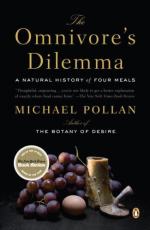|
This section contains 812 words (approx. 3 pages at 400 words per page) |

|
Chapter Five through Chapter Seven Summary and Analysis
In chapter five, Pollan begins by noting that much of the corn we eat is not in the form of corn, but is processed into other compounds in a "wet mill". The process separates the skin, used in vitamins and supplements, the germ, which is used for oil, and the endosperm, which is used for its complex carbohydrates. This is broken down into one of many compounds, including starches, sugars, alcohols, acids, and others, which end up as a thousand other products found in processed food every day. Pollan is allowed to see this process at the Center for Crops Utilization Research at Iowa State University. Wet milling produces corn starch, which is then broken into glucose and sweeteners, including high fructose corn syrup. Pollan points out that all of this is the...
(read more from the Chapter Five through Chapter Seven Summary)
|
This section contains 812 words (approx. 3 pages at 400 words per page) |

|




